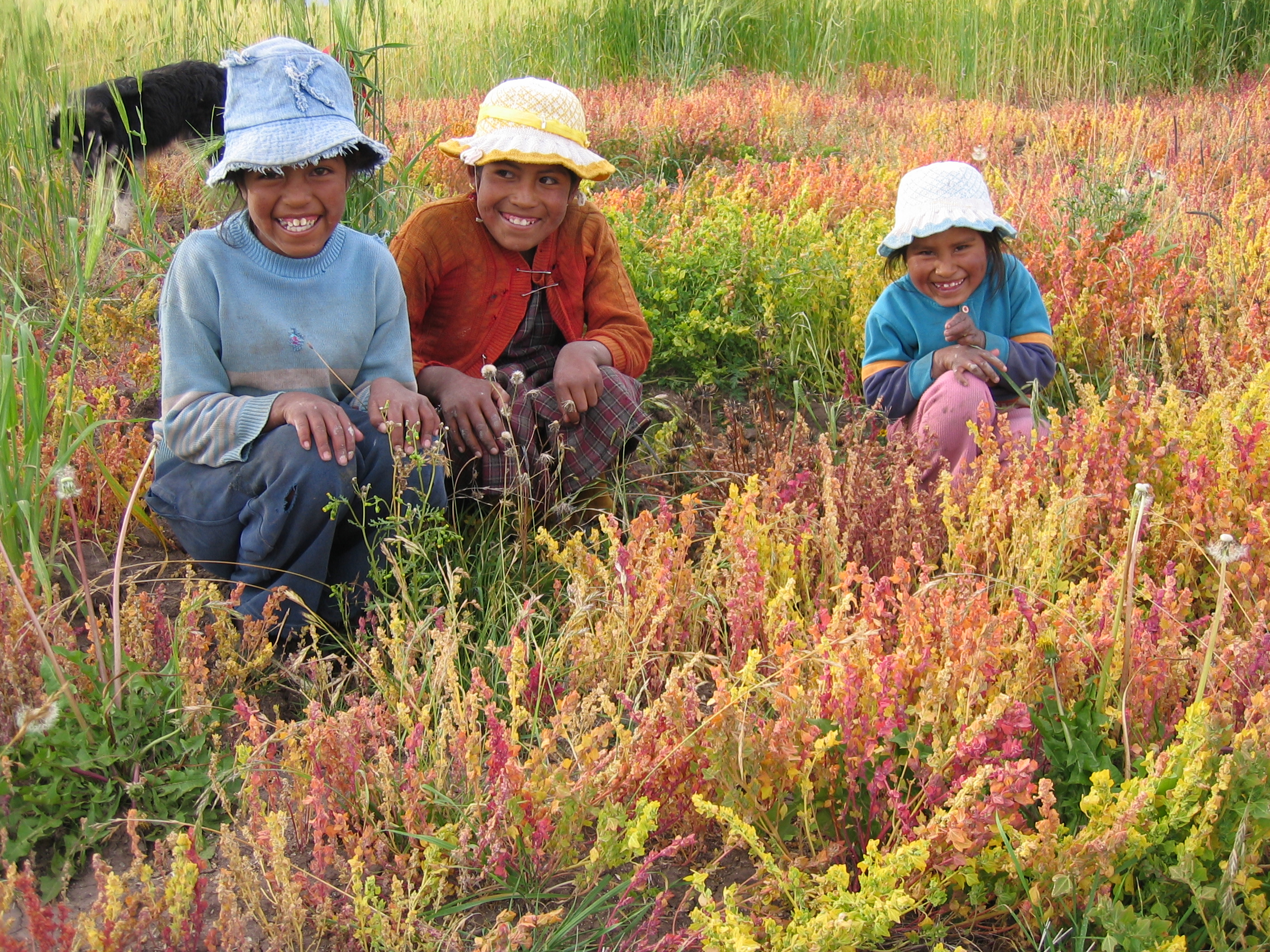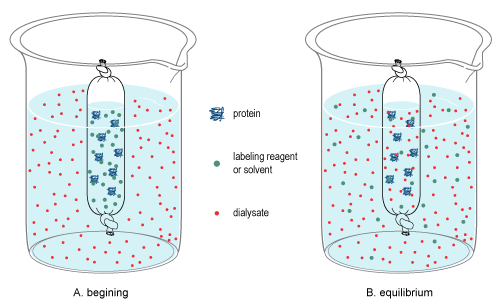|
Kañiwa
''Chenopodium pallidicaule'', known as ''cañihua'', ''canihua'' or ''cañahua'' (from Quechua ''qañiwa, qañawa or qañawi'') and also kaniwa, is a species of goosefoot, similar in character and uses to the closely related ''quinoa'' ''(Chenopodium quinoa)''. Cañihua is native to the Andean region, with more than 200 varieties, and it has been farmed in the Altiplano for millennia. As a crop, cañihua has distinct characteristics, including tolerance of high mountain conditions, high content of protein and dietary fiber, and rich phenolic content. Botanical description Cañihua is a herbaceous and annual plant. This species is diploid with a chromosome number of 2n = 18. There are two types of this species, which differ in their branching. The ''lasta'' type shows high branching, whereas the ''saguia'' type is characterized by few branching and its more erected growth.Hemandez, Esteban J. (1994). ''Neglected crops:1492 from a different perspective''. Rome: FAO. . The plant gr ... [...More Info...] [...Related Items...] OR: [Wikipedia] [Google] [Baidu] |
Goosefoot
''Chenopodium'' is a genus of numerous species of perennial or annual herbaceous flowering plants known as the goosefoots, which occur almost anywhere in the world. It is placed in the family Amaranthaceae in the APG II system; older classification systems, notably the widely used Cronquist system, separate it and its relatives as Chenopodiaceae, but this leaves the rest of the Amaranthaceae polyphyletic. However, among the Amaranthaceae, the genus ''Chenopodium'' is the namesake member of the subfamily Chenopodioideae. Description The species of ''Chenopodium'' (s.str., description according to Fuentes et al. 2012) are annual or perennial herbs, shrubs or small trees. They generally rely on alkaline soil. They are nonaromatic, but sometimes fetid. The young stems and leaves are often densely covered by vesicular globose hairs, thus looking farinose. Characteristically, these trichomes persist, collapsing later and becoming cup-shaped. The branched stems grow erect, ascendin ... [...More Info...] [...Related Items...] OR: [Wikipedia] [Google] [Baidu] |
Peru
, image_flag = Flag of Peru.svg , image_coat = Escudo nacional del Perú.svg , other_symbol = Great Seal of the State , other_symbol_type = Seal (emblem), National seal , national_motto = "Firm and Happy for the Union" , national_anthem = "National Anthem of Peru" , march = "March of Flags" , image_map = PER orthographic.svg , map_caption = , image_map2 = , capital = Lima , coordinates = , largest_city = capital , official_languages = Peruvian Spanish, Spanish , languages_type = Co-official languages , languages = , ethnic_groups = , ethnic_groups_year = 2017 , demonym = Peruvians, Peruvian , government_type = Unitary state, Unitary Semi-presidential system, semi-presidential republic , leader_title1 = President of Peru, President ... [...More Info...] [...Related Items...] OR: [Wikipedia] [Google] [Baidu] |
Atuncolla District
Atuncolla District is one of fifteen Districts of Peru, districts of Puno Province in Peru. Ethnic groups The people in the district are mainly Indigenous peoples of the Americas, indigenous citizens of Quechua people, Quechua descent. Quechua language, Quechua is the first language which the majority of the population (90.06%) learnt to speak in childhood. 9.23% of the residents speak Spanish language, Spanish as a first language. (2007 Peru Census). INEI, Peru, Censos Nacionales 2007, Frequencias: Preguntas de Población: Idioma o lengua con el que aprendió hablar (in Spanish) [...More Info...] [...Related Items...] OR: [Wikipedia] [Google] [Baidu] |
Cytoplasmic Male Sterility
Cytoplasmic male sterility is total or partial male sterility in plants as the result of specific nuclear and mitochondrial interactions. Male sterility is the failure of plants to produce functional anthers, pollen, or male gametes. Background Joseph Gottlieb Kölreuter was the first to document male sterility in plants. In the 18th century, he reported on anther abortion within species and specific hybrids. Cytoplasmic male sterility (CMS) has now been identified in over 150 plant species. Male sterility is more prevalent than female sterility. This could be because the male sporophyte and gametophyte are less protected from the environment than the ovule and embryo sac. Male-sterile plants can set seed and propagate. Female-sterile plants cannot develop seeds and will not propagate. Manifestation of male sterility in CMS may be controlled either entirely by cytoplasmic factors or by interactions between cytoplasmic factors and nuclear factors. Male sterility can arise sp ... [...More Info...] [...Related Items...] OR: [Wikipedia] [Google] [Baidu] |
Elsevier
Elsevier () is a Dutch academic publishing company specializing in scientific, technical, and medical content. Its products include journals such as ''The Lancet'', ''Cell'', the ScienceDirect collection of electronic journals, '' Trends'', the '' Current Opinion'' series, the online citation database Scopus, the SciVal tool for measuring research performance, the ClinicalKey search engine for clinicians, and the ClinicalPath evidence-based cancer care service. Elsevier's products and services also include digital tools for data management, instruction, research analytics and assessment. Elsevier is part of the RELX Group (known until 2015 as Reed Elsevier), a publicly traded company. According to RELX reports, in 2021 Elsevier published more than 600,000 articles annually in over 2,700 journals; as of 2018 its archives contained over 17 million documents and 40,000 e-books, with over one billion annual downloads. Researchers have criticized Elsevier for its high profit marg ... [...More Info...] [...Related Items...] OR: [Wikipedia] [Google] [Baidu] |
Amaranthus Caudatus
''Amaranthus caudatus'' (also known as ''Amaranthus edulis'' and ''Amaranthus mantegazzianus'') is a species of annual flowering plant. It goes by common names such as love-lies-bleeding, pendant amaranth, tassel flower, velvet flower, foxtail amaranth, and quilete. To the Quechua people of South America, ''A. caudatus'' is referred to as kiwicha, quihuicha, inca jataco; ataco, ataku, sankurachi, jaguarcha (Ecuador), millmi, or coimi. While to the Aymara people, who are native to the Andes and Altiplano regions of South America, ''A. caudatus'' is known as qamasa. Many parts of the plant, including the leaves and seeds, are edible, and are frequently used as a source of food in India as well as in South America, where it is the most important Andean species of ''Amaranthus'', known as kiwicha. (See also amaranth seed and Andean ancient plants.) This species, as with many other amaranths, is originally from the American tropics. The exact origin is unknown, as ''A. caudatus'' ... [...More Info...] [...Related Items...] OR: [Wikipedia] [Google] [Baidu] |
Chenopodium Quinoa
Quinoa (''Chenopodium quinoa''; , from Quechua ' or ') is a flowering plant in the amaranth family. It is a herbaceous annual plant grown as a crop primarily for its edible seeds; the seeds are rich in protein, dietary fiber, B vitamins, and dietary minerals in amounts greater than in many grains. Quinoa is not a grass, but rather a pseudocereal botanically related to spinach and amaranth (''Amaranthus'' spp.), and originated in the Andean region of northwestern South America. It was first used to feed livestock 5,2007,000 years ago, and for human consumption 3,0004,000 years ago in the Lake Titicaca basin of Peru and Bolivia. The plant thrives at high altitudes and produces seeds that are rich in protein. Almost all production in the Andean region is done by small farms and associations. Its cultivation has spread to more than 70 countries, including Kenya, India, the United States, and in European countries. As a result of increased popularity and consumption in North Am ... [...More Info...] [...Related Items...] OR: [Wikipedia] [Google] [Baidu] |
Food Security
Food security speaks to the availability of food in a country (or geography) and the ability of individuals within that country (geography) to access, afford, and source adequate foodstuffs. According to the United Nations' Committee on World Food Security, food security is defined as meaning that all people, at all times, have physical, social, and economic access to sufficient, safe, and nutritious food that meets their food preferences and dietary needs for an active and healthy life. The availability of food irrespective of class, gender or region is another element of food security. There is evidence of food security being a concern many thousands of years ago, with central authorities in ancient China and ancient Egypt being known to release food from storage in times of famine. At the 1974 World Food Conference, the term "food security" was defined with an emphasis on supply; food security is defined as the "availability at all times of adequate, nourishing, diverse, bal ... [...More Info...] [...Related Items...] OR: [Wikipedia] [Google] [Baidu] |
Wiley Interscience
John Wiley & Sons, Inc., commonly known as Wiley (), is an American multinational publishing company founded in 1807 that focuses on academic publishing and instructional materials. The company produces books, journals, and encyclopedias, in print and electronically, as well as online products and services, training materials, and educational materials for undergraduate, graduate, and continuing education students. History The company was established in 1807 when Charles Wiley opened a print shop in Manhattan. The company was the publisher of 19th century American literary figures like James Fenimore Cooper, Washington Irving, Herman Melville, and Edgar Allan Poe, as well as of legal, religious, and other non-fiction titles. The firm took its current name in 1865. Wiley later shifted its focus to scientific, technical, and engineering subject areas, abandoning its literary interests. Wiley's son John (born in Flatbush, New York, October 4, 1808; died in East Orange, New Jers ... [...More Info...] [...Related Items...] OR: [Wikipedia] [Google] [Baidu] |
Dialysis (chemistry)
In chemistry, dialysis is the process of separating molecules in solution by the difference in their rates of diffusion through a semipermeable membrane, such as dialysis tubing. Dialysis is a common laboratory technique that operates on the same principle as medical dialysis. In the context of life science research, the most common application of dialysis is for the removal of unwanted small molecules such as salts, reducing agents, or dyes from larger macromolecules such as proteins, DNA, or polysaccharides. Dialysis is also commonly used for buffer exchange and drug binding studies. The concept of dialysis was introduced in 1861 by the Scottish chemist Thomas Graham. He used this technique to separate sucrose (small molecule) and gum Arabic solutes (large molecule) in aqueous solution. He called the diffusible solutes crystalloids and those that would not pass the membrane colloids. From this concept dialysis can be defined as a spontaneous separation process of suspended ... [...More Info...] [...Related Items...] OR: [Wikipedia] [Google] [Baidu] |
CRC Press
The CRC Press, LLC is an American publishing group that specializes in producing technical books. Many of their books relate to engineering, science and mathematics. Their scope also includes books on business, forensics and information technology. CRC Press is now a division of Taylor & Francis, itself a subsidiary of Informa. History The CRC Press was founded as the Chemical Rubber Company (CRC) in 1903 by brothers Arthur, Leo and Emanuel Friedman in Cleveland, Ohio, based on an earlier enterprise by Arthur, who had begun selling rubber laboratory aprons in 1900. The company gradually expanded to include sales of laboratory equipment to chemists. In 1913 the CRC offered a short (116-page) manual called the ''Rubber Handbook'' as an incentive for any purchase of a dozen aprons. Since then the ''Rubber Handbook'' has evolved into the CRC's flagship book, the '' CRC Handbook of Chemistry and Physics''. In 1964, Chemical Rubber decided to focus on its publishing ventures ... [...More Info...] [...Related Items...] OR: [Wikipedia] [Google] [Baidu] |
Springer Science+Business Media
Springer Science+Business Media, commonly known as Springer, is a German multinational publishing company of books, e-books and peer-reviewed journals in science, humanities, technical and medical (STM) publishing. Originally founded in 1842 in Berlin, it expanded internationally in the 1960s, and through mergers in the 1990s and a sale to venture capitalists it fused with Wolters Kluwer and eventually became part of Springer Nature in 2015. Springer has major offices in Berlin, Heidelberg, Dordrecht, and New York City. History Julius Springer founded Springer-Verlag in Berlin in 1842 and his son Ferdinand Springer grew it from a small firm of 4 employees into Germany's then second largest academic publisher with 65 staff in 1872.Chronology ". Springer Science+Business Media. In 1964, Springer expanded its business internationally, o ... [...More Info...] [...Related Items...] OR: [Wikipedia] [Google] [Baidu] |
.jpg)

.jpg)

